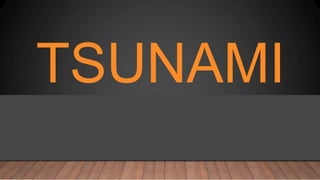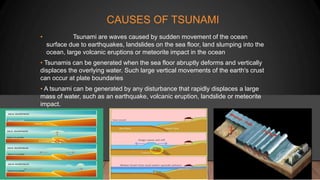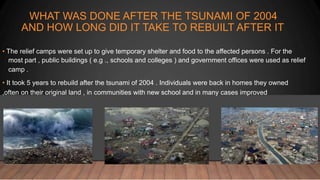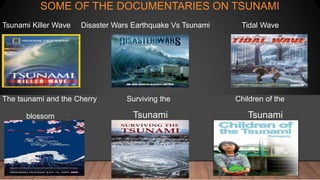A tsunami is a series of waves caused by the displacement of the ocean, usually from earthquakes. Tsunamis can cross entire oceans very quickly, though they appear as an increase in water level rather than large breaking waves. The 2004 Indian Ocean tsunami was one of the deadliest, killing over 230,000 people across several countries. Rebuilding after such an event can take years, with temporary shelters, schools, and infrastructure being prioritized in impacted areas. Survivors often have harrowing tales of enduring the initial waves and subsequent days without supplies before being rescued.














